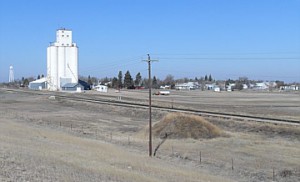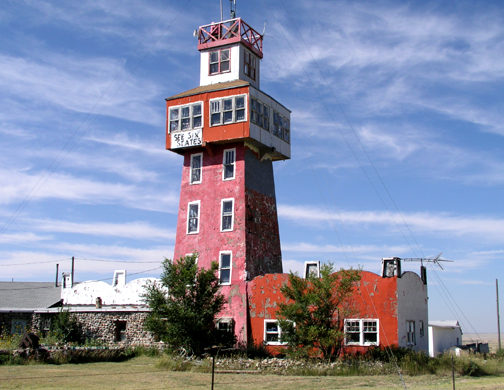Genoa Colorado — Taming The Wild West
Genoa Colorado was not even on the map in 1888 when the Colorado and Kansas RR began building across the central plains of Colorado. Their goal was to reach Colorado Springs. As they laid rails they would put in sidings for towns. Creech was one of these sidings and it was named after a major Rock Island Railroad stockholder, parent company of the CK&N Railroad. There were a few farms and some ranches in the area. With the coming of the railroad came interest and a town was platted and laid out. Creech was now a town on the high plains with a boxcar depot and rail service.
 Photo by John LaBorde – Historian.
Photo by John LaBorde – Historian.
The town began to grow and the railroad added more sidings, stock pens, and trackside businesses. 1895 saw a name change as Creech fell out of favor and became Cable. Because there already was a place called Cable Junction, it did not last long. [su_spacer] Once again the name of the town was changed this time to Genoa. Legend has it that a railroad worker was injured and dying and wanted to return to his home in Italy. As a dying wish, the town of Cable was changed to Genoa, the dying workers hometown in Italy, makes a good story. The community of Genoa thrived and prospered. Homes were built, and the railroad brought homesteaders in. Stores were started, a bank, farm implement shops, gas stations, churches, a movie house and a schoolhouse were built. The dust bowl changed the dreams of the settlers and times changed. People left and the highway became an Interstate isolating the town. Today Genoa is a town of 200 sitting on the escarpment at 6000 feet elevation that has a moderate climate. Today farming and ranching are still the major occupations. No longer do the buffalo herds roam the area followed by the Indians. There are antelope still browsing on the grasses, artifacts from the Indians can still be found in the fields. Author:John LaBorde (Historian)
 Another spot to notice before you leave Genoa:
Another spot to notice before you leave Genoa:
The Genoa Tower (located on the west end of Genoa)
Currently this structure from the late 1800’s is closed to the public, but it bears noting that this landmark served as a lookout for approaching stagecoaches and Indians bent on disrupting the progress of the railroad and the advent of iron horse. It was touted by Ripley’s Believe-it-or-Not! as providing a glimpse of as many as six states for viewers brave enough to climb to the top of the tower on a clear day. 
 Photo by John LaBorde – Historian.
Photo by John LaBorde – Historian.  Another spot to notice before you leave Genoa:
Another spot to notice before you leave Genoa:
